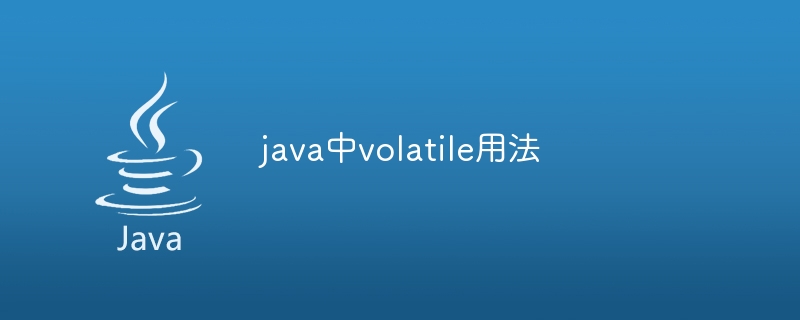
The volatile keyword in Java is used to modify shared variables to ensure that their modifications are visible between different threads: Guaranteed visibility: All threads can immediately see modifications to volatile variables. Disable instruction reordering: This can prevent access to volatile variables from being reordered, ensuring a clear read and write order. Use in multi-threaded environments: The volatile keyword is mainly used in multi-threaded environments to ensure the visibility of shared variables and prevent threads from operating different copies. Usage scenarios: Usually used for shared variables that require synchronous access, such as counters and status flags. Note: volatile does not enforce atomicity, does not apply to long and double types, and may

volatile usage in Java
The volatile keyword is used in Java to modify a shared variable to ensure that operations on the variable are visible between different threads. The specific usage is as follows:
1. Ensure visibility
A variable declared as volatile can immediately see modifications to it in all threads. Without volatile, one thread might see the old value of the variable, even if another thread has modified it.
volatile int counter = 0;2. Disable instruction reordering
The volatile keyword prevents the compiler and processor from reordering access to volatile variables. This ensures that reads and writes to volatile variables occur in a well-defined order.
volatile int flag = false; // 确保 flag 更改之前,所有线程都可见 if (flag) { // 执行某些操作 }3. Use in a multi-threaded environment
The volatile keyword is mainly used in a multi-threaded environment because it can ensure that shared variables are shared between different threads. Visibility. If volatile is not used, threads may operate on different copies of the shared variable, causing inconsistent program behavior.
4. Usage scenarios
volatile is usually used for shared variables that require synchronous access, such as counters, status flags, and configuration options.
5. Notes
The above is the detailed content of How to use volatile in java. For more information, please follow other related articles on the PHP Chinese website!




